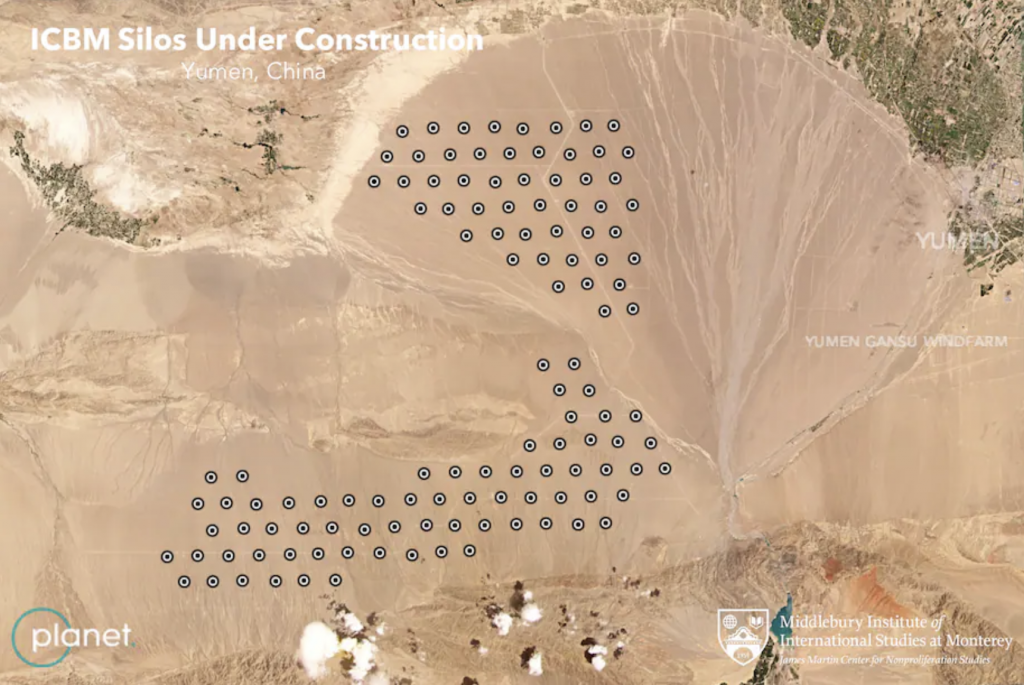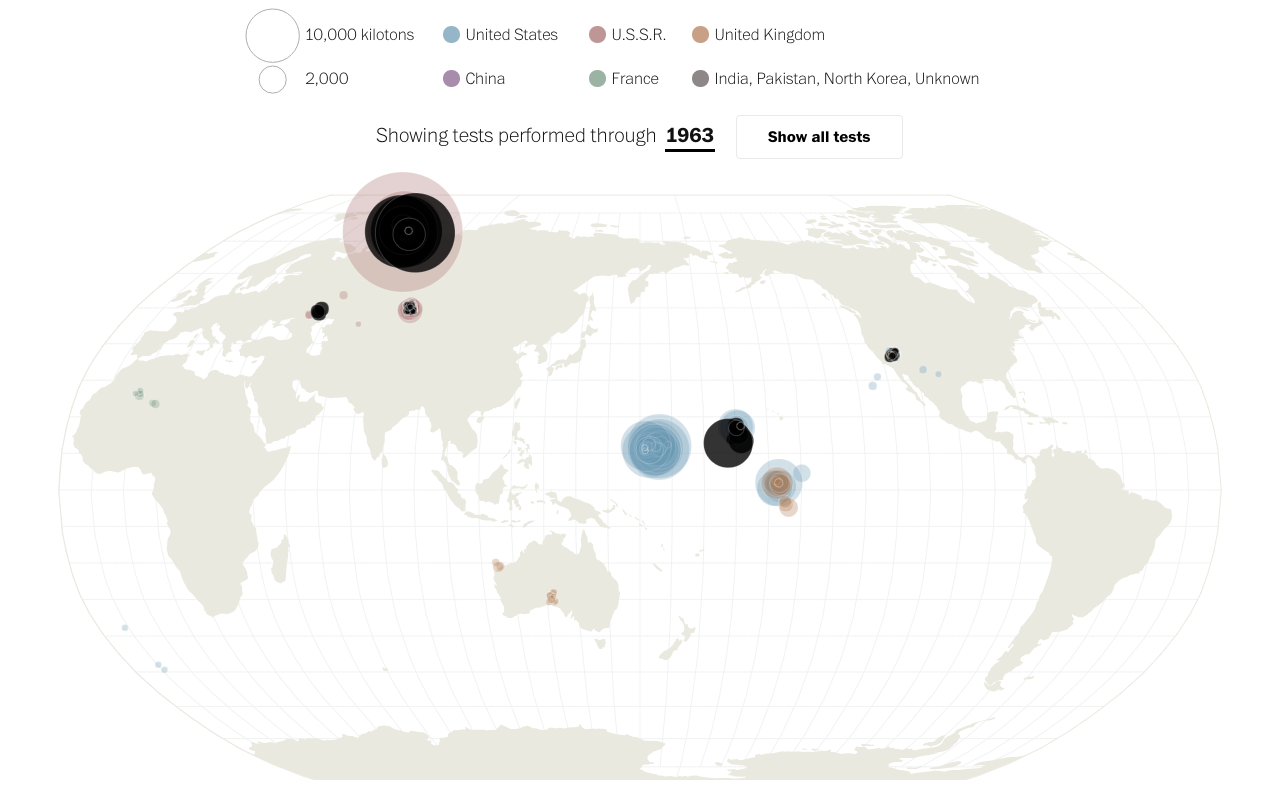Yesterday I wrote about some new ICBM silos China is building in its western desert. These things clearly interest me and so I was doing a little more digging when I found this even more recent article, this one from the BBC about an entirely different ICBM silo field that China is building in another western desert.
In terms of data visualisation and information design, we are looking at the same kind of graphic: an annotated satellite photograph. But the story it paints is the same: China is rapidly expanding its nuclear missile arsenal.
Similar to the earlier piece we see dots to indicate missile silo construction sites. But the Federation of American Scientists noted these silos appear to be at earlier phase of the construction process given that sites were still being cleared and prepared for construction activity.

But put it together with the publicly available information from yesterday and, again, we can only draw the conclusion that China wants to greatly increase its nuclear arsenal. And like yesterday we’re left with the same question:
How will the United States and her allies respond?
Credit for the piece goes to the Federation of American Scientists.









